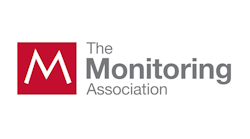Legal Brief: FirstNet - From Tragedy to Triumph

I woke on Sept. 11, 2001, on a beautiful morning. A Tuesday. I was preparing to go to work. My apartment and my office were both located nearby the World Trade Center Towers.
At approximately 8:46 a.m., my building shook. The lights flickered. I heard commotion outside. Approximately 16 minutes later, I heard the roar of jet engines. I quickly saw the source was a commercial passenger jet. It was flying very low. It finished its bank from the west, leveled its wings and accelerated right by my apartment window. An explosion. Again, my building shook. The lights flickered. More commotion.
Later that morning, while on the street and now well aware of the circumstances, I walked south on Broadway when the sound of thunder erupted. It was the south tower crumbling. I turned and ran, certain I would be the victim of falling debris. But I was lucky – other than the cover of a cloud of dust, I was unharmed.
Others were not as lucky – including many heroes who ran into the buildings to help others. Many of those losses would have been preventable with adequate communications systems during the emergency.
In 2001, the Fire Department of New York, the New York Police Department and the Port Authority Police all used different radio systems with different capabilities on different frequencies. Devices and networks were overloaded and cellular service failed completely.
When the 9/11 Commission released its report in 2004, it identified communications failures as a “critical element” that inhibited the response to the attacks; however, these communications problems did not surface for the first or the last time on 9/11.
Presidential commissions and post-event analysis revealed the same problems dating as far back as 1967, as well as for pre-9/11 tragedies like the Oklahoma City bombing and the Columbine High School shooting. Even post-9/11 events – Hurricanes Katrina and Sandy and the Boston Marathon bombing in particular – experienced similar technical communications problems.
Until recently, there was no national solution.
FirstNet is Created
In 2012, Congress mandated and funded the creation of the first ever nationwide cellular network dedicated to public safety, known as FirstNet, and chose AT&T as its corporate partner in 2017.
The FirstNet mission is to deploy, operate, maintain, and improve the first high-speed, reliable, highly secure, interoperable, and innovative public safety communications platform for public safety agencies and first responders.
Progress has been swift. At the end of 2019, AT&T announced that FirstNet had passed the 1 million connections mark, with the network buildout at approximately 75% complete (six to nine months ahead of schedule). The network includes cutting edge 5G-enabled equipment to be activated in 2020.
Subscriptions by public safety agencies are growing; in fact, nearly 9,000 public safety agencies and organizations have subscribed to FirstNet. This is great progress, however, there are approximately 65,000 such public agencies in the United States – so there is room for growth.
Adoption by the Alarm Industry
Subscription to and use of FirstNet by the alarm industry is also a work in progress. In the spring of 2019, The Monitoring Association (TMA), announced a partnership with AT&T to develop an eligibility verification process for qualified alarm companies. I provided legal advice pro bono to TMA with respect to this initiative.
According to TMA, FirstNet eligibility will be limited to those alarm companies that meet certain accepted industry standards for transmitting public-safety related alarms (e.g., robbery, burglary, unlawful intrusion, fire, emergency medical). Once verified, alarm companies can present the TMA Certificate of Verification to AT&T as part of their application to operate on the network as an extended primary user in support of public safety.
The goal of verified public safety-related alarms using FirstNet is to help first responders prevent the loss of life and property and to supply the critical information first responders need to quickly respond to alarm-initiated incidents. This is a worthy supplemental use of FirstNet and hopefully will lead to more reliable communications, better service, and lower customer attrition in the private security industry.
The origins of FirstNet are rooted in tragedy; however, the public and private development of this network offers us hope that someday our country will have a robust and ubiquitous platform for all of our public safety communications.
Timothy J. Pastore, Esq., is a Partner in the New York office of Montgomery McCracken Walker & Rhoads LLP (www.mmwr.com), where he is Vice-Chair of the Litigation Department. Before entering private practice, Mr. Pastore was an officer and Judge Advocate General (JAG) in the U.S. Air Force and a Special Assistant U.S. Attorney with the U.S. Department of Justice. Reach him at (212) 551-7707 or by e-mail at [email protected].

Timothy J. Pastore, Esq.
Timothy J. Pastore Esq., is a Partner in the New York office of Montgomery McCracken Walker & Rhoads LLP (www.mmwr.com), where he is Vice-Chair of the Litigation Department. Before entering private practice, he was an officer and Judge Advocate General (JAG) in the U.S. Air Force and Attorney with the DOJ. [email protected] • (212) 551-7707
Meet Timothy J. Pastore
Timothy J. Pastore, Esq., is the newest columnist to join the Security Business magazine family. He is a Partner in the New York office of Montgomery McCracken Walker & Rhoads LLP (www.mmwr.com), where he is Vice-Chair of the Litigation Department.
Before entering private practice, Mr. Pastore was an officer and Judge Advocate General (JAG) in the U.S. Air Force and a Special Assistant U.S. Attorney with the U.S. Department of Justice. As a JAG, in particular, Mr. Pastore was legal counsel to the Air Force Security Forces and Air Force Office of Special Investigations.
Mr. Pastore has represented some of the largest companies in the security industry, including Protection One, Comcast, Charter, Cox, Altice, Mediacom, IASG, CMS and others. He regularly provides counsel on risk management, contracting, operations, licensing, sales practices, etc. Mr. Pastore also has served as lead counsel in courts throughout the country in dozens of litigation matters involving the security industry.
Among other examples, Mr. Pastore led the successful defense at trial of cable giant Comcast in a home invasion case in Seattle, Washington. The case received significant press attention and was heralded by CVN as a top-ten defense verdict.
Mr. Pastore is a graduate of Bucknell University and Boston College Law School.
Reach him at (212) 551-7707 or by e-mail at [email protected].




